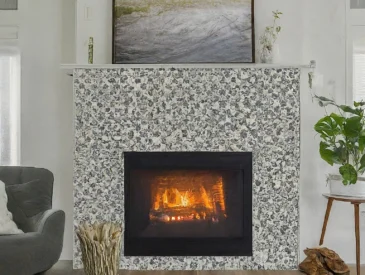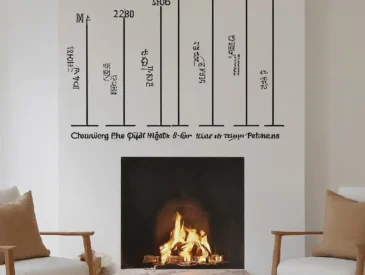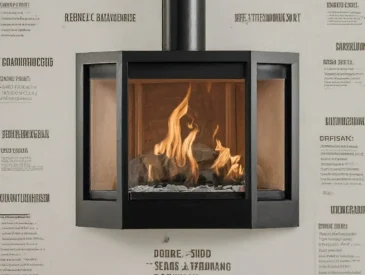Fireplaces add a unique ambiance to any home, creating a cozy atmosphere that’s hard to beat. However, when it comes to choosing fuel, reaching for that bag of charcoal might seem like a convenient option.
In this article, we’ll explore why charcoal isn’t the best choice for indoor fireplaces and provide you with safer alternatives.
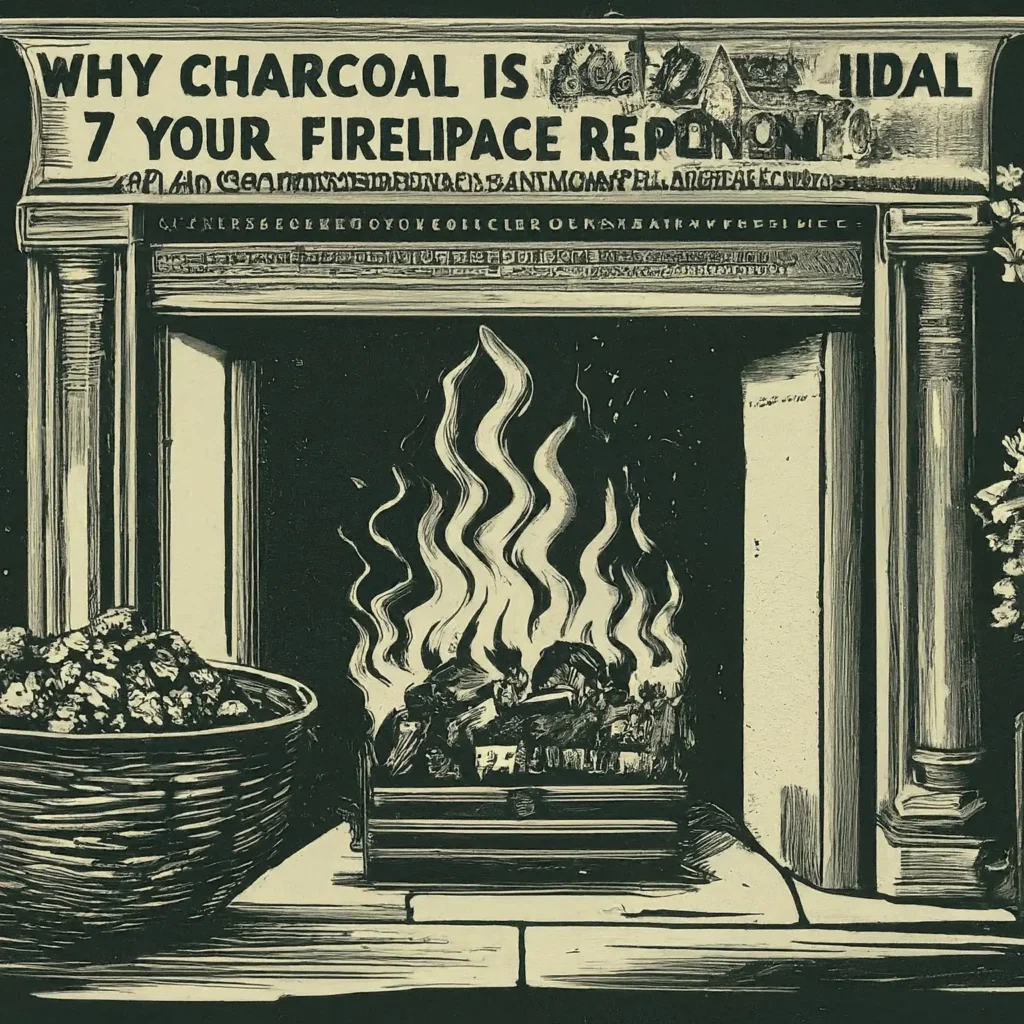
1. Intense heat output:
Charcoal burns significantly hotter than firewood, potentially exceeding safe temperature limits for your fireplace and chimney. While wood typically burns at temperatures between 320 and 800 degrees Fahrenheit,
charcoal can reach a scorching 1,200 degrees Fahrenheit, or even higher for charcoal briquettes. It’s crucial to consider your fireplace’s heat tolerance.
2. Carbon Monoxide Hazard:
Burning charcoal releases carbon monoxide, an odorless and lethal gas. When confined in an enclosed space, the buildup of carbon monoxide can be life-threatening, especially for vulnerable individuals like children, the elderly, and those with underlying health conditions.
3. Carcinogenic Emissions:
Using charcoal for cooking in a fireplace can lead to the production of carcinogens. High-temperature cooking of certain meats can generate heterocyclic amines (HCAs), which are cancer-causing substances. This is a risk not associated with wood.
4. Accelerant Effect:
Similar to lighter fluid or gas, charcoal acts as an accelerant, leading to unpredictable and potentially dangerous flames. Using accelerants can result in fires growing too quickly or flames escaping the fireplace, posing a significant risk.
5. Lower Efficiency:
Compared to wood, charcoal takes longer to heat up and burns for a shorter duration. This inefficiency means you’ll spend more time waiting for your fireplace to reach the desired temperature, and it won’t provide as sustained a heat source as wood.
6. Understanding Charcoal Types:
It’s essential to differentiate between charcoal types. Lump charcoal is suitable for outdoor fire pits and grilling due to its quick ignition and responsiveness to oxygen.
Briquette charcoal, though slower to ignite, burns longer and is more cost-effective. Extruded charcoal is typically shaped into logs through a high-pressure process.
7. Charcoal vs. Coal:
While they may seem similar, charcoal and coal are distinct. Charcoal is a man-made mineral produced from burned wood, while coal is a natural mineral found in the Earth’s crust. It’s crucial to ensure your fireplace is compatible with your chosen fuel source.
8. Exploring Different Types of Charcoal: Lump Charcoal: Derived from hardwood through a process known as carbonization, lump charcoal is a highly favored option.
While it’s not recommended for enclosed fireplaces, it shines in outdoor fire pits and grilling. Its rapid ignition and high reactivity to oxygen make it easy to control the temperature.
9. Briquette Charcoal: Charcoal briquettes, while slower to ignite and not as hot as lump coal, offer an extended burn time and a budget-friendly alternative.
It’s worth noting that they may emit a slight chemical scent. This is due to the combination of manufactured wood by-products and chemical additives, which facilitate a steady burn.
10. Extruded Charcoal: Extruded charcoal takes shape as log-like forms through a process called extrusion, achieved through high pressure. The materials used, whether raw ground wood or carbonized wood, are pressed through a mold to create their distinctive shape.
Distinguishing Between Charcoal and Coal:
While charcoal and coal may appear similar, they are fundamentally different.
Charcoal: A man-made mineral produced from burned wood through an artificial process that extracts all water and volatile components. It is often black.
Coal: A natural mineral found in the earth’s crust, ranging from dark to various shades of grey, yellow, or rust due to weathering. It forms beneath the Earth’s surface, sometimes as deep as 3,000 feet.
Miners extract coal through a process known as underground or deep mining. It is primarily found in regions such as the United States, China, Russia, Australia, and India, with mining operations spread across 25 states in the US.
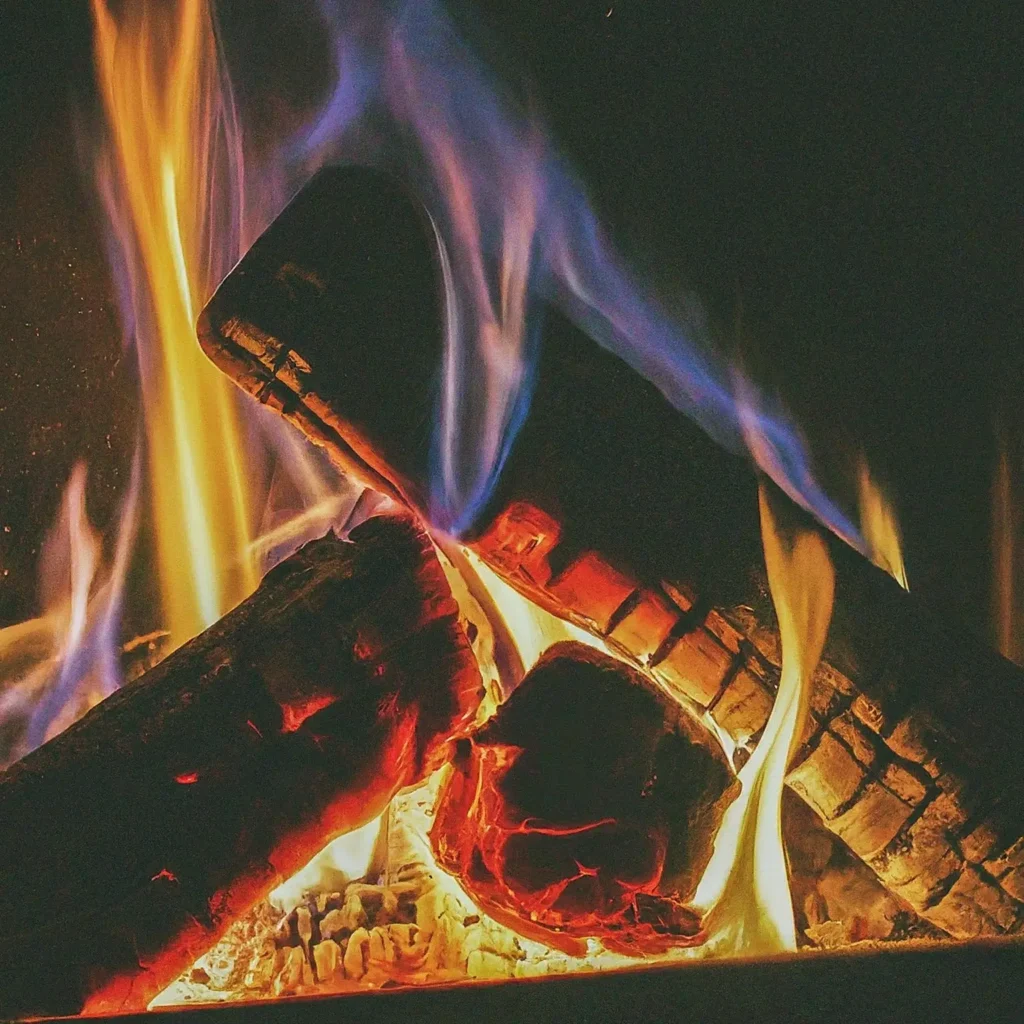
Considerations for Fireplace Fuel: It’s important to note that both charcoal and coal are generally discouraged as fuel sources for fireplaces.
For instance, burning coal in a wood-burning fireplace is not advisable. Always verify whether your fireplace is compatible with these alternative fuels before use.
Can You Safely Use Charcoal Briquettes in a Fireplace? Burning charcoal briquettes in a fireplace is not recommended. Anything made with charcoal can generate toxic carbon monoxide when burned,
which poses a significant risk in enclosed environments. This practice is unsafe and should be avoided to ensure the safety of those in the vicinity.
Conclusion:
For a safe and enjoyable fireplace experience, it’s best to steer clear of charcoal. Opt for wood as a more suitable and reliable fuel source.
If you’re considering a fire pit, charcoal can be used safely in well-ventilated outdoor spaces. Remember to maintain your fire pit regularly for optimal fireplace performance and safety.


